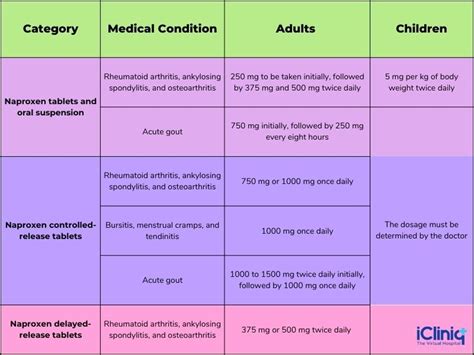Intro
Discover Naproxens effects, uses, and benefits, including pain relief, anti-inflammatory properties, and treatment for conditions like arthritis, with insights into dosage, side effects, and interactions for safe usage.
Naproxen is a widely used medication that belongs to the class of nonsteroidal anti-inflammatory drugs (NSAIDs). It is commonly prescribed to alleviate pain, reduce inflammation, and lower fever. The importance of understanding naproxen effects and uses cannot be overstated, as it is a medication that is often used to treat a variety of conditions, from mild headaches to chronic arthritis. In this article, we will delve into the world of naproxen, exploring its benefits, working mechanisms, and potential side effects. Whether you are a healthcare professional or simply someone looking to learn more about this medication, this article aims to provide a comprehensive overview of naproxen effects and uses.
The use of naproxen has become increasingly prevalent in recent years, with many people relying on it to manage their pain and inflammation. However, it is essential to understand the potential risks and benefits associated with this medication. By doing so, individuals can make informed decisions about their treatment options and minimize the risk of adverse reactions. Furthermore, naproxen is often used in combination with other medications, which can increase the risk of interactions and side effects. Therefore, it is crucial to approach the use of naproxen with caution and under the guidance of a healthcare professional.
Naproxen is a versatile medication that can be used to treat a variety of conditions, including arthritis, tendinitis, and menstrual cramps. It works by blocking the production of prostaglandins, which are hormone-like substances that cause pain and inflammation. By reducing the levels of prostaglandins in the body, naproxen can provide relief from pain and inflammation, making it an effective treatment option for many people. However, it is essential to use naproxen responsibly and under the guidance of a healthcare professional, as it can have potential side effects and interactions with other medications.
Naproxen Mechanism of Action

Benefits of Naproxen
The benefits of naproxen are numerous and well-documented. Some of the most significant advantages of using naproxen include: * Relief from pain and inflammation * Reduction of fever * Improvement of symptoms associated with arthritis, tendinitis, and menstrual cramps * Anti-inflammatory effects * Ability to be used in combination with other medicationsNaproxen Uses

Naproxen Side Effects
While naproxen is generally well-tolerated, it can cause side effects in some people. Some of the most common side effects of naproxen include: * Stomach upset * Nausea and vomiting * Diarrhea * Constipation * Headaches * Dizziness * DrowsinessNaproxen Interactions

Naproxen Dosage
The dosage of naproxen varies depending on the condition being treated. The typical dosage of naproxen is: * 250-500 mg every 8-12 hours for arthritis * 250-500 mg every 8-12 hours for tendinitis * 250-500 mg every 8-12 hours for menstrual cramps * 250-500 mg every 8-12 hours for headaches * 250-500 mg every 8-12 hours for feverNaproxen Precautions

Naproxen Warnings
Naproxen can cause serious warnings, including: * Increased risk of heart attack and stroke * Increased risk of stomach ulcers and bleeding * Increased risk of kidney damage * Increased risk of liver damage * Increased risk of allergic reactionsNaproxen Overdose

Naproxen Treatment
Naproxen treatment involves: * Stopping the use of naproxen * Administering activated charcoal to absorb the medication * Providing supportive care, such as hydration and monitoring of vital signs * Administering medications to treat symptoms, such as anti-nausea medicationsNaproxen Alternatives

Naproxen Conclusion
In conclusion, naproxen is a widely used medication that can provide relief from pain and inflammation. However, it is essential to use naproxen responsibly and under the guidance of a healthcare professional, as it can have potential side effects and interactions with other medications. By understanding the benefits and risks of naproxen, individuals can make informed decisions about their treatment options and minimize the risk of adverse reactions.What is naproxen used for?
+Naproxen is used to treat a variety of conditions, including arthritis, tendinitis, menstrual cramps, headaches, and fever.
What are the side effects of naproxen?
+The side effects of naproxen include stomach upset, nausea and vomiting, diarrhea, constipation, headaches, dizziness, and drowsiness.
Can naproxen be used in combination with other medications?
+Yes, naproxen can be used in combination with other medications, but it is essential to consult with a healthcare professional before doing so, as it can increase the risk of interactions and side effects.
We hope this article has provided you with a comprehensive overview of naproxen effects and uses. If you have any further questions or concerns, please do not hesitate to comment below. Additionally, if you found this article informative, please share it with others who may benefit from this information. By working together, we can promote responsible use of medications and minimize the risk of adverse reactions.
